Recent Articles
Popular Makes
Body Types
2016 Honda CR-V Road Test & Review
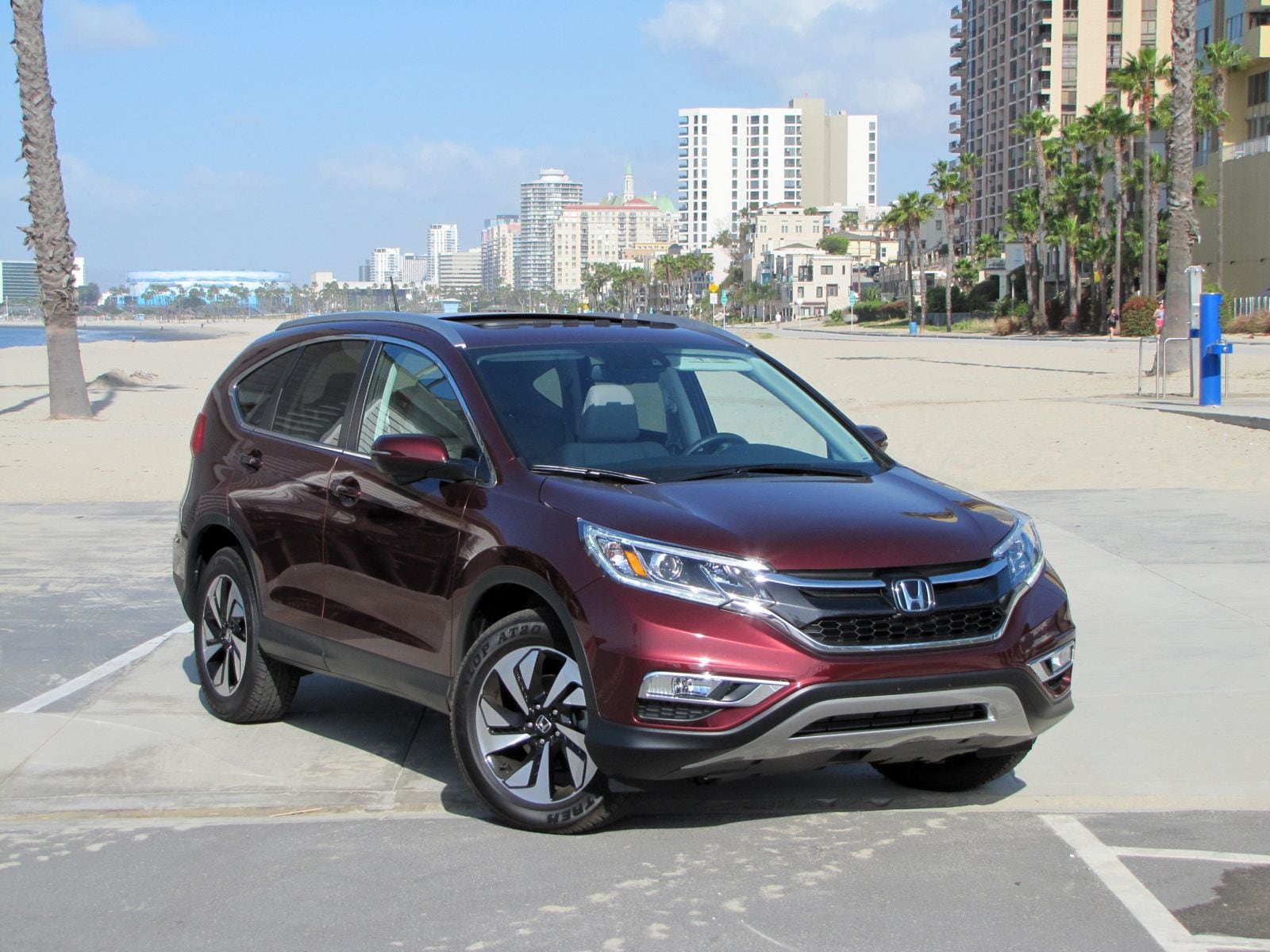
2016 Honda CR-V front angle view ・ Photo by Ryan ZumMallen
While automakers have been scrambling to capitalize on the compact crossover craze in recent years, it helps to be ahead of the curve. Nearly twenty years after its pioneering debut, the venerable Honda CR-V crossover holds the advantage of name recognition and experience. A recent week of testing proved that the sudden influx of competition has not passed the CR-V by, and it’s a stellar performer in the areas that compact SUV buyers value most.
The 2016 CR-V provides plenty of space for five passengers, and includes clever use of storage and cargo capacity; excellent crash test ratings and an impressive suite of available technologies earned the CR-V high safety scores; and a capable four-cylinder engine delivers both power and fuel efficiency. If you were asked to describe the ideal compact crossover for the market today, bringing the 2016 Honda CR-V to mind would be a great place to start.
What's New?
Honda has upgraded the CR-V consistently and effectively over the past twenty years. After a complete redesign in 2012, and a design refresh in 2015, the only change for the 2016 model year is the addition of the new Special Edition trim. While the CR-V hasn’t made major changes for 2016, it has benefited from new technologies that position it well against its competitors: increased use of high-strength steel improves rigidity and keeps weight down; the continuously variable transmission excels in both Econ and Sport mode; and the 2.4-liter four-cylinder engine was given direct injection and a die-cast aluminum block for quicker and more efficient performance.
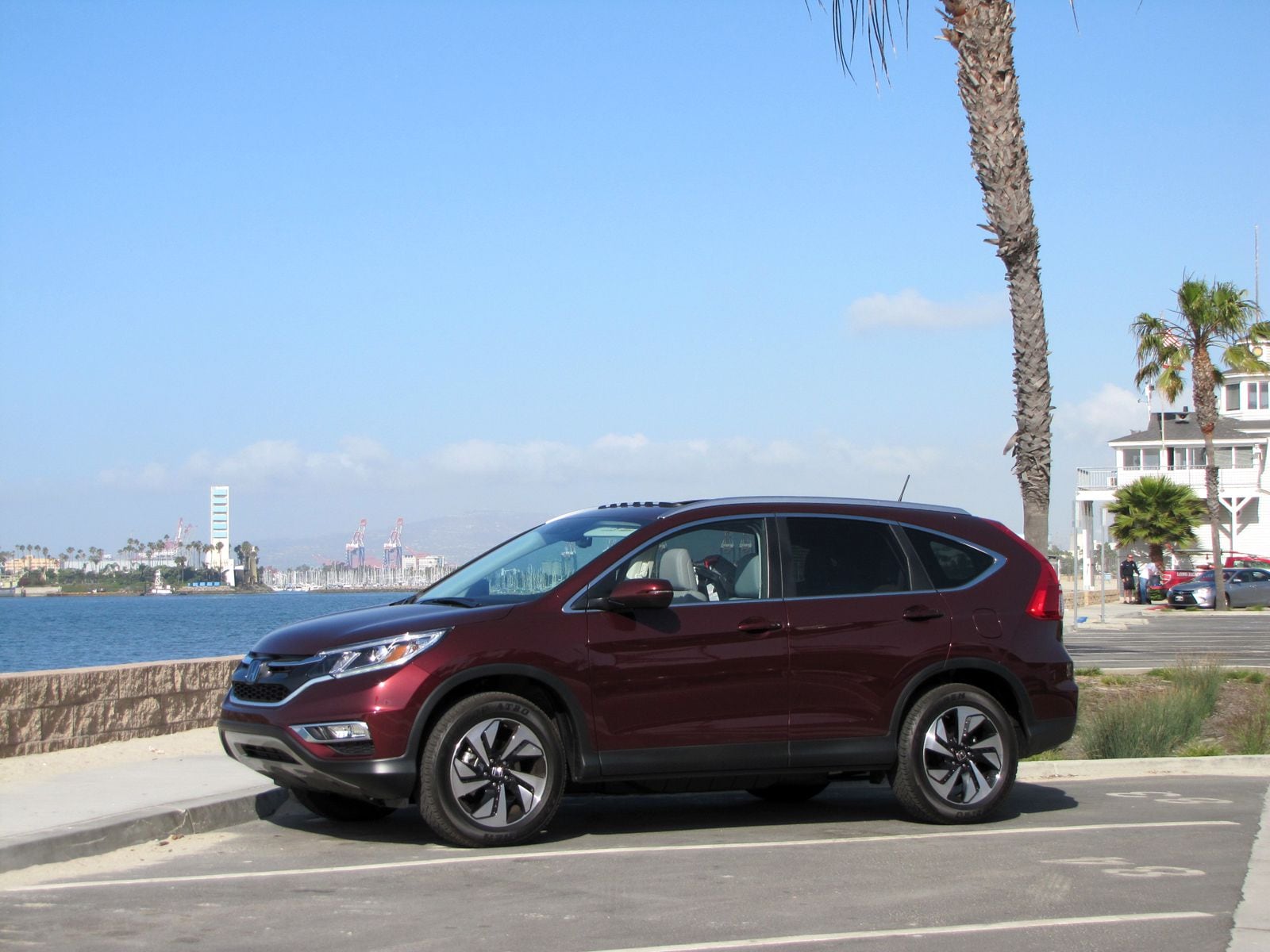
Photo by Ryan ZumMallen
Exterior and Size
It would be easy for Honda to rest on the good name of the CR-V, and design not to offend rather than push the envelope. For a vehicle that consistently sells in the 350,000 per year range, you can’t afford to mess up the look. And to a certain extent, designers did play it safe here. The silhouette of the CR-V is a bit more upright and traditional than others in the segment. At the same time, the bold front fascia — shared with the newest versions of the Civic and Accord — is far from boring, incorporating a jarring yet graceful gloss black grille, and sharpened headlights that spread in a winged formation from corner to corner. Our test vehicle, a fully-loaded CR-V Touring model, incorporated 18-inch wheels that fit the crossover’s sleek but familiar presence.
The weight of the CR-V depends on the trim, and falls somewhere between 3,358 lbs. for the base LX 2WD and 3,624 lbs. for the Touring AWD — with about 60-percent of the weight over the front of the SUV and 40-percent over the rear. These dimensions, coupled with improvements to the engine and solid construction of the chassis, are the basis for the stellar performance that places the CR-V at the top of a crowded class.
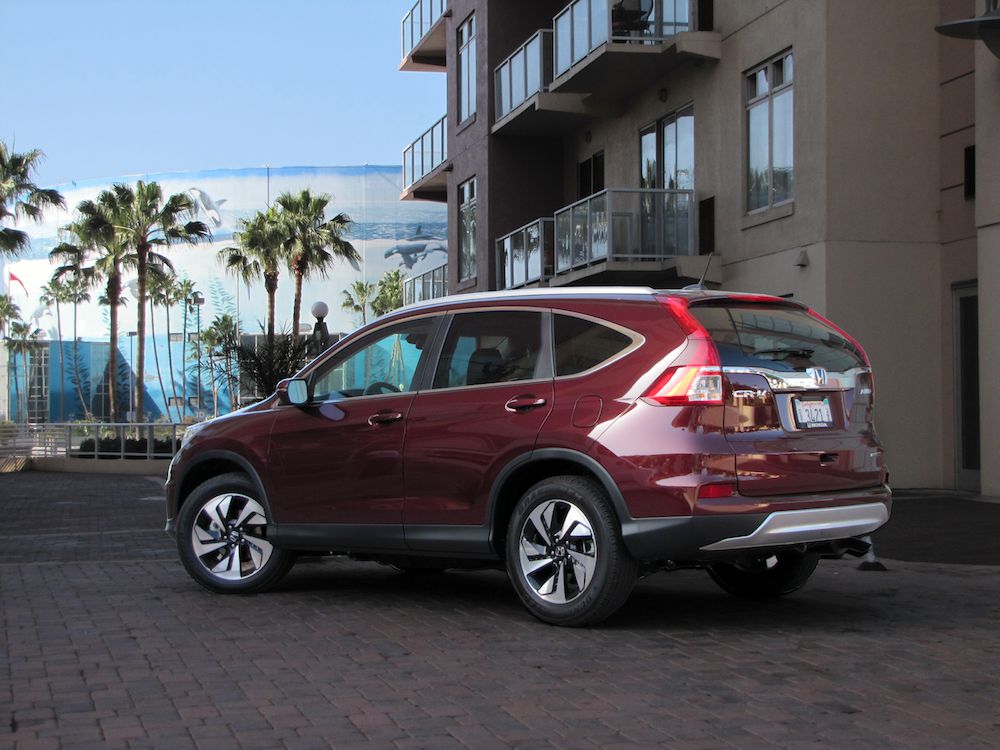
Photo by Ryan ZumMallen
Inside Information
The interior of the 2016 Honda CR-V is a master class in utilization of space. There’s nothing fancy—no big, curvy lines or eye-popping designs—but there is plenty of head and leg room in every direction, a warm and welcoming decor that is both family friendly and decidedly upscale, with an ingenious use of storage. Both the front driver’s door and front passenger’s door have three separate cubby spaces for loose odds and ends, not counting the glove box, overhead sunglasses bin, cavernous middle console and open room under the center stack.
Up front, visibility is excellent thanks to a sweeping windscreen and large side windows. A power moonroof comes standard with every trim except the base LX. In the Touring trim, the snug seats are comfortable, heated and leather-trimmed. The back row seats three without trouble, and feature a 60/40 split to open up cargo space from 35.3 cu. feet to 70.9 cu. feet—good for the class, though not better than the Toyota RAV4 and some others. Honda used to equip the CR-V with their fantastic patented Magic Seat, but since 2015 it is only available in other models.
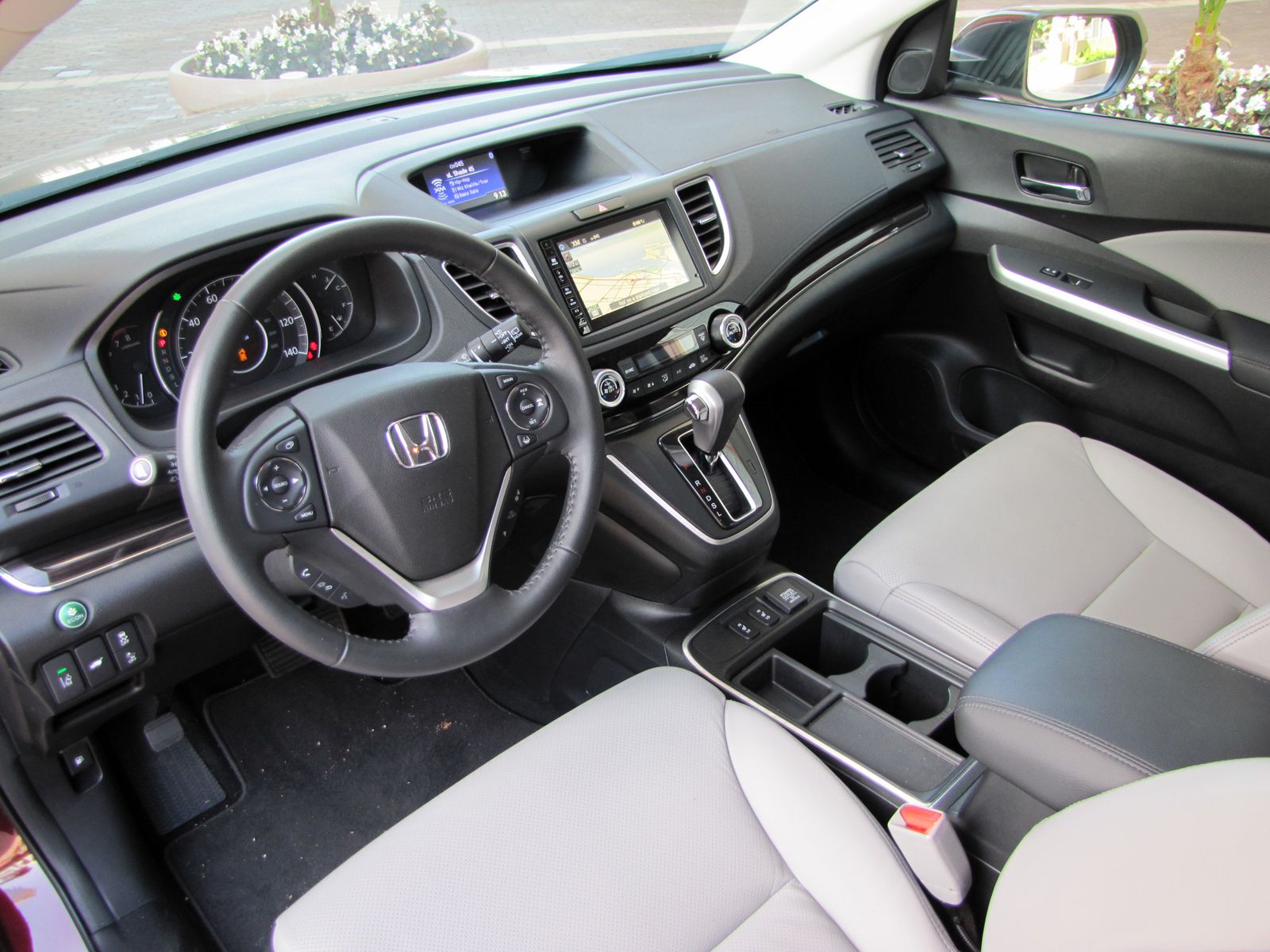
Photo by Ryan ZumMallen
Infotainment & Tech
While the 2016 Honda CR-V carries its clever and modern philosophy into the cabin, it also stumbles a bit when it comes to technology. Updated for its latest generation, the HondaLink infotainment system isn’t easy to use. Simply operating the controls can be tricky, since most functions depend on tapping tiny buttons or the 7-inch center screen—combined with slow reaction times, it’s not a match made in heaven. There are no knobs for changing the radio station or adjusting the volume; each is an exercise in stress management. The map also features far less information than Honda’s competitors, often leaving a large and nondescript grid without identifying markers or even street names on display.
Navigation is a breeze though, and indicative of the CR-V’s technology strengths. Counting the center screen, the smaller screen above it, and the info display between the instrument gauges, the CR-V boasts three helpful screens to send you information at any time. Under route direction, I used the center screen for an overhead map, the upper screen for radio or fuel mileage info, and the gauge display for turn-by-turn.
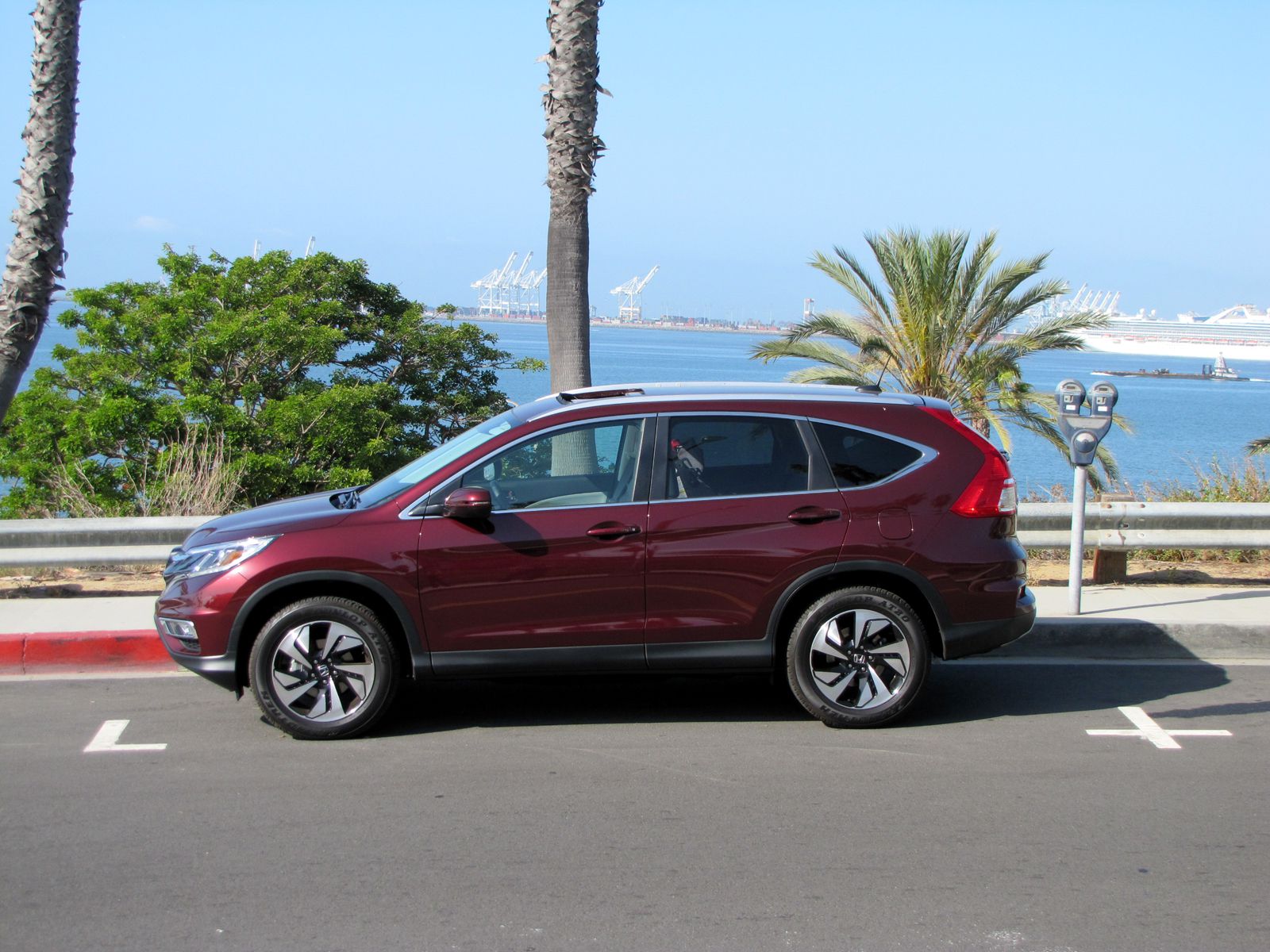
Photo by Ryan ZumMallen
Stellar Performance
It should come as no surprise that Honda nailed the powertrain in the 2016 CR-V. The engine is a 2.4-liter inline 4-cylinder using the company’s Earth Dreams Technology, which alludes to their philosophy of achieving greater efficiency through features like direct injection, variable valve timing, friction reduction and more. The result is 185 horsepower at 6,400 rpm, 181 lb.-ft of torque at 3,900 rpm, and fuel economy ratings of 26 MPG city and 33 MPG highway (AWD versions are rated 25/31 MPG). Power is very well managed through a continuously variable transmission (CVT), which are growing more and more prevalent in this segment by the day.
In standard driving situations, the CR-V accelerates with impressive pull. Thanks to a gradual torque curve and management by the CVT, the engine feels consistent at nearly any speed. This is an extremely effective powerplant; smooth and refined enough to deliver a pleasant ride, and always eager to kick things up a notch. Sport Mode noticeably ups the ante, and allows the CVT to hold onto gears longer to find more speed. Also available is a small green ECON button to the left of the steering wheel, which delivers improved fuel economy. Unfortunately, not quite improved enough: Though I did push the CR-V much harder than most owners ever will, the final 25.9 MPG figure at the end of my week was a bit disappointing.
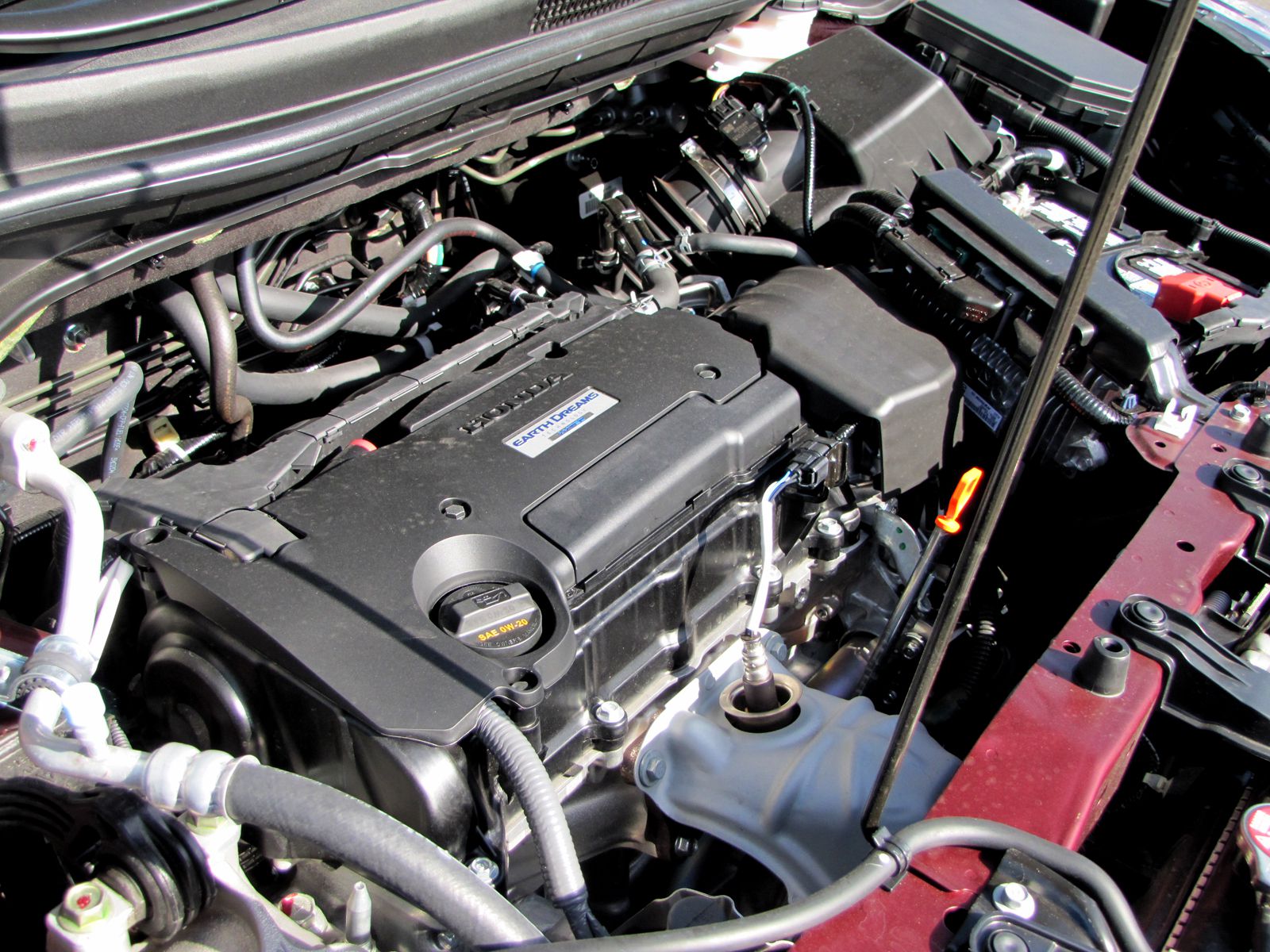
Photo by Ryan ZumMallen
Driving Impressions
On the road, the solid construction and capable drivetrain combine with the direct steering response that we’ve come to expect from Honda, to create an engaging and fun driving experience. Electric Power-Assisted steering stays clear of the numb and fluffy feeling that often accompanies such systems. Though the wheelbase is a couple of inches shorter than some other crossover entries, the CR-V delivers a stable and smooth ride that isn’t bothered by bumps in the road. Noise and vibration inside the car are barely perceptible, too.
Even for a vehicle measuring nearly 65 inches in height, the 2016 CR-V exhibits very little body roll and shifts its weight very well from side to side—thanks likely to front and rear stabilizer bars to keep things in order. All-wheel drive versions of the CR-V are equipped with Real Time AWD with Intelligent Control System, which Honda says will send power to the appropriate wheel depending on traction. On windy roads, there were only small traces of understeer. Braking is another strong point, with 11.8-inch ventilated discs up front (11.7 inches on FWD models) and 12.0-inch ventilated discs at the rear. Honda includes ABS, Electronic Brake Distribution and Brake Assist standard. It’s the impressive cherry on top of a delicious driving sundae.
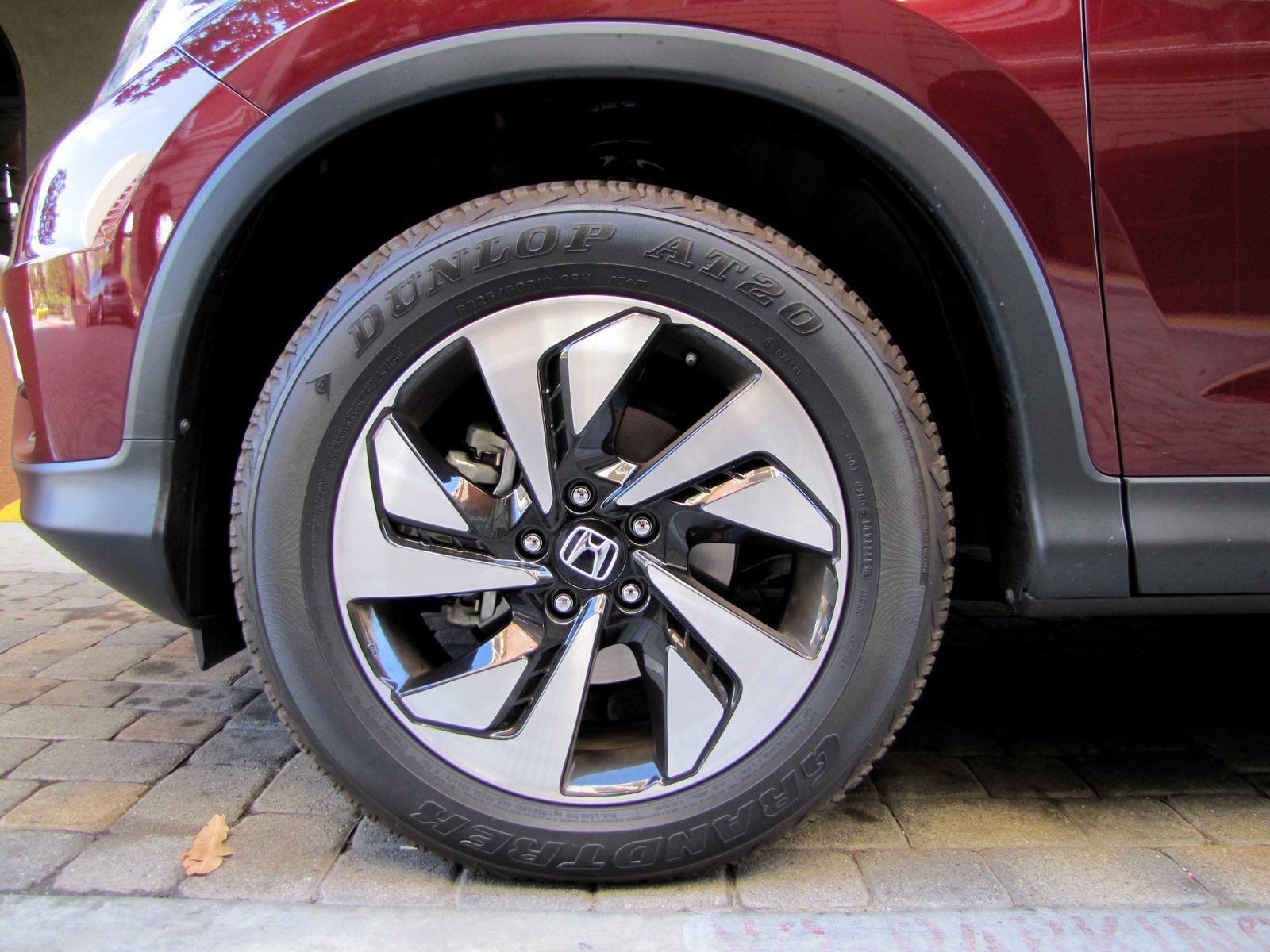
Photo by Ryan ZumMallen
Safety Measures
Honda carried over its strategy of making incremental improvements to the CR-V in the department of safety, as well. When the previous version of the car didn’t perform well in the new IIHS small front overlap crash, engineers addressed the issue. For 2015, Honda made the full range of safety technologies available in the Honda Sensing Suite, which includes collision warning, emergency braking, lane departure warnings and lane keeping assist as well as adaptive cruise control and is standard on the top level CR-V Touring trim. These “smart” safety features were enough to garner the Top Safety Pick+ award, the highest honor that the IIHS hands out. NHTSA also gave the 2016 CR-V five stars in its overall crash test rating.
Many of the safety technologies are fascinating, but one in particular is potentially game-changing. The aforementioned spoil of screens often came in handy when Honda’s innovative LaneWatch system was activated. LaneWatch eliminates your right-side blind spot with a camera positioned on the passenger’s side view mirror. When the CR-V is in Drive and the blinker is clicked to the right, LaneWatch kicks in, clearly displaying the blind spot on the large center screen with helpful distance indicators. At first, it was startling: I felt awkward taking my eyes off the road to stare at the screen before changing lanes. Once I settled in, though, I realized it’s much safer than craning my head all the way around. After that, I welcomed LaneWatch with every lane change. The extra screens also came in handy by keeping my navigation info visible in the process. It’s a truly helpful technology, made better with the number and placement of screens.
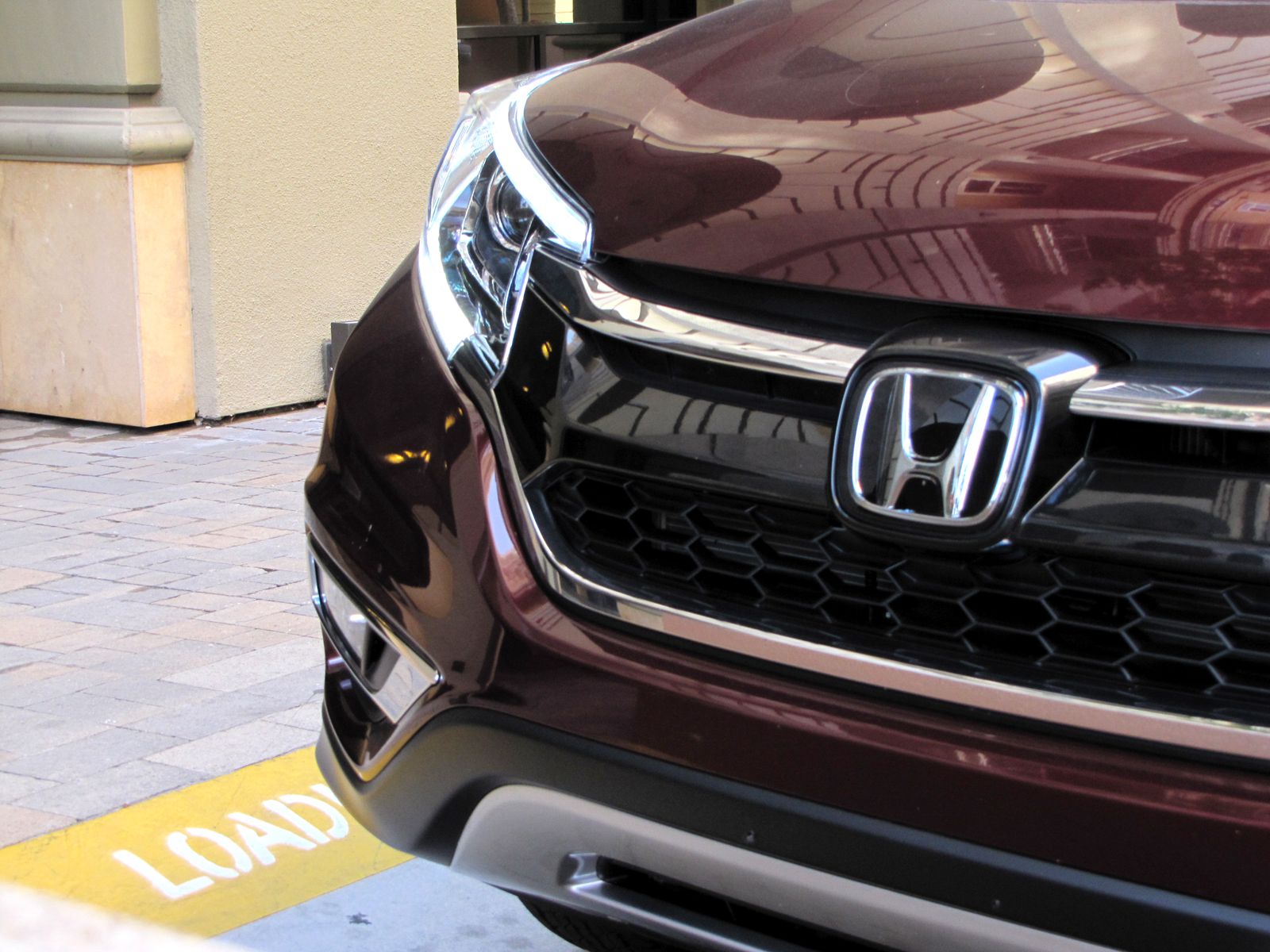
Photo by Ryan ZumMallen
Trims & Pricing
Honda has made the 2016 CR-V available in five different trim levels, all of which come with an impressive array of standard features. The base model is called the CR-V LX—starting at $23,745 for the 2WD version and $25,045 for the AWD, it includes the multi-angle rearview camera, USB and Bluetooth connectivity, and both Pandora and SMS Text Message functions. Moving up to the newly-added CR-V SE trim adds 17-inch allow wheels and a security system for $24,545 for 2WD, and $25,845 for AWD. The extra goodies start rolling in with the CR-V EX, which boasts the standard moonroof, heated front seats and a 10-way power adjustable driver’s seat, the 7-inch touchscreen display, a push-button start and fog lights. Choosing this option will run you $25,995 for 2WD and $27,295 for AWD.
If you’re looking to add an extra layer of luxury, the CR-V EX-L brings plenty more to the table: dual-zone climate control; heated side mirrors; roof rails; leather-trimmed seats and a leather-wrapped steering wheel; SiriusXM Radio and an optional $1,500 navigation system. Pricing starts at $28,445 for 2WD and $29,945 for AWD. Last but not least is the full-loaded CR-V Touring. The biggest selling point here is the Honda Sensing suite, which excels in the safety department with collision warning, emergency braking, lane departure warnings and lane keeping assist as well as adaptive cruise control. Navigation is standard here, as is the power tailgate, 18-inch wheels and projector beam halogen headlights. The 2WD version runs $32,095 while the AWD will start from $33,395—my tester came to $34,145 with destination.
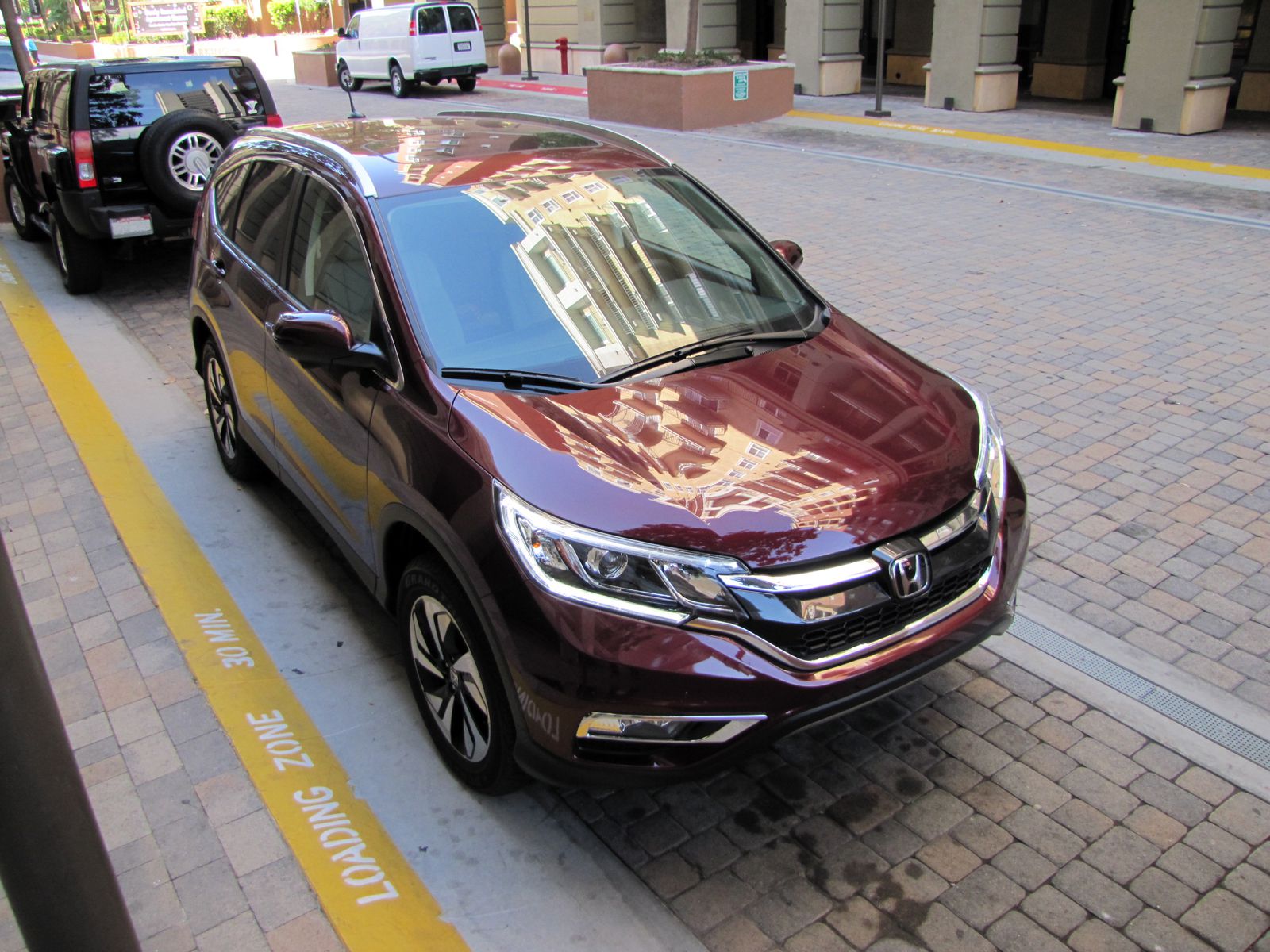
Photo by Ryan ZumMallen
Competition
Though currently white-hot amongst buyers, the small crossover segment is still relatively new to the automotive industry. Automakers are still perfecting the formula for car-like compact utility vehicles with ample space and exciting performance, and it’s not an exact science. With twenty years under its belt to refine and improve, there is no question that the 2016 CR-V is at or near the top of the pile. Of course, there are many vying for that number one spot: the Mazda CX-5 delivers excellent performance and eye-grabbing style; the Ford Escape is another contender for best all-around package; the Hyundai Tucson packs an incredible amount of luxury and value into an affordable price sheet—all three of them have easier interior controls than the CR-V. It will be fascinating to see how these vehicles continue to develop as crossover buyers’ tastes become more clearly defined, and understood. In the meantime, there are plenty of attractive options out there, and the 2016 Honda CR-V is easily among the best.
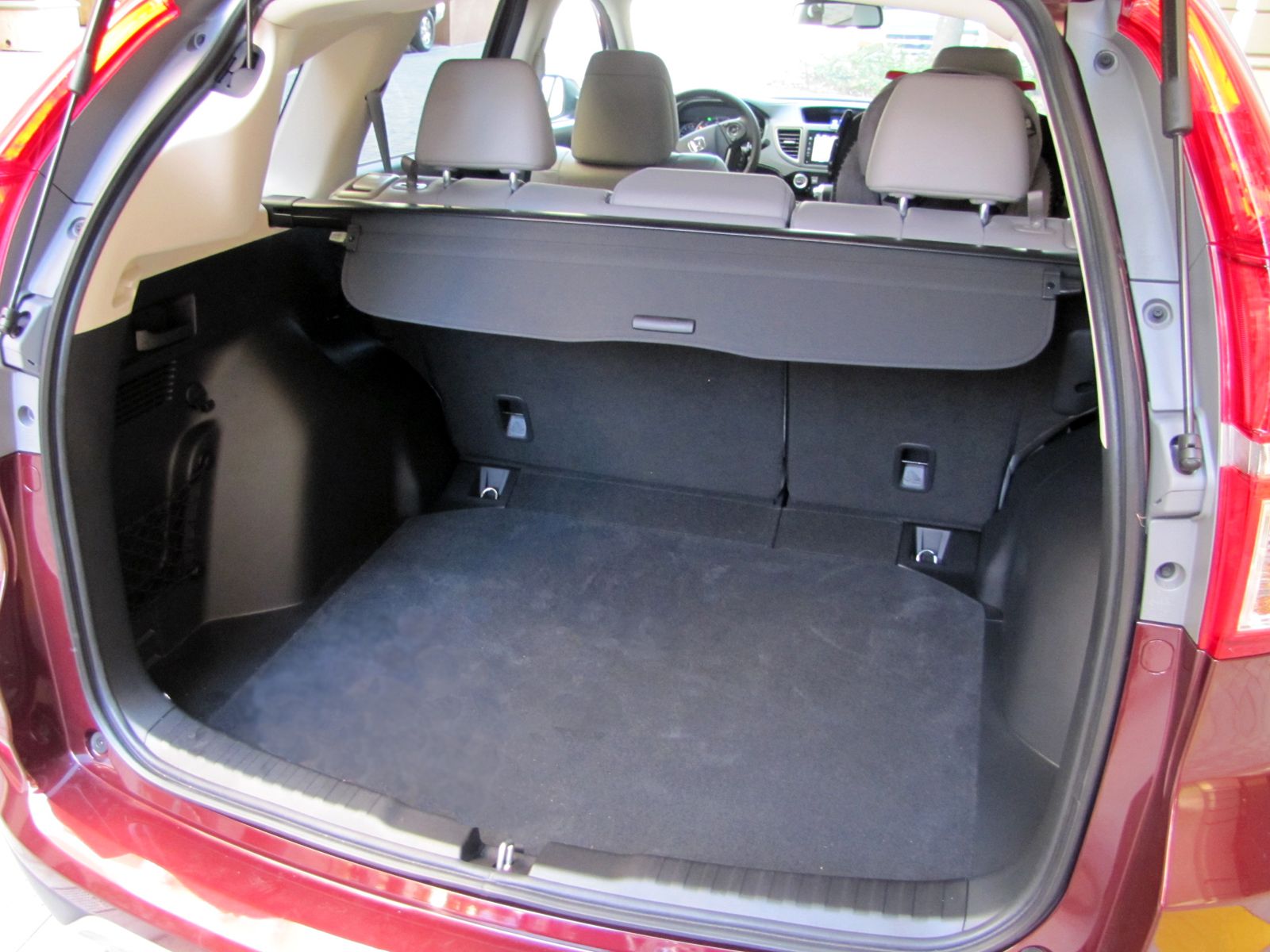
Photo by Ryan ZumMallen
Pros & Cons
:
- Excellent handling
- Comfortable interior
- Strong safety scores
- Impressive suite of technologies
- Engine and transmission are smooth and powerful together
:
- Average fuel economy
- Underwhelming infotainment controls
- Some competitors have slightly better cargo capacity
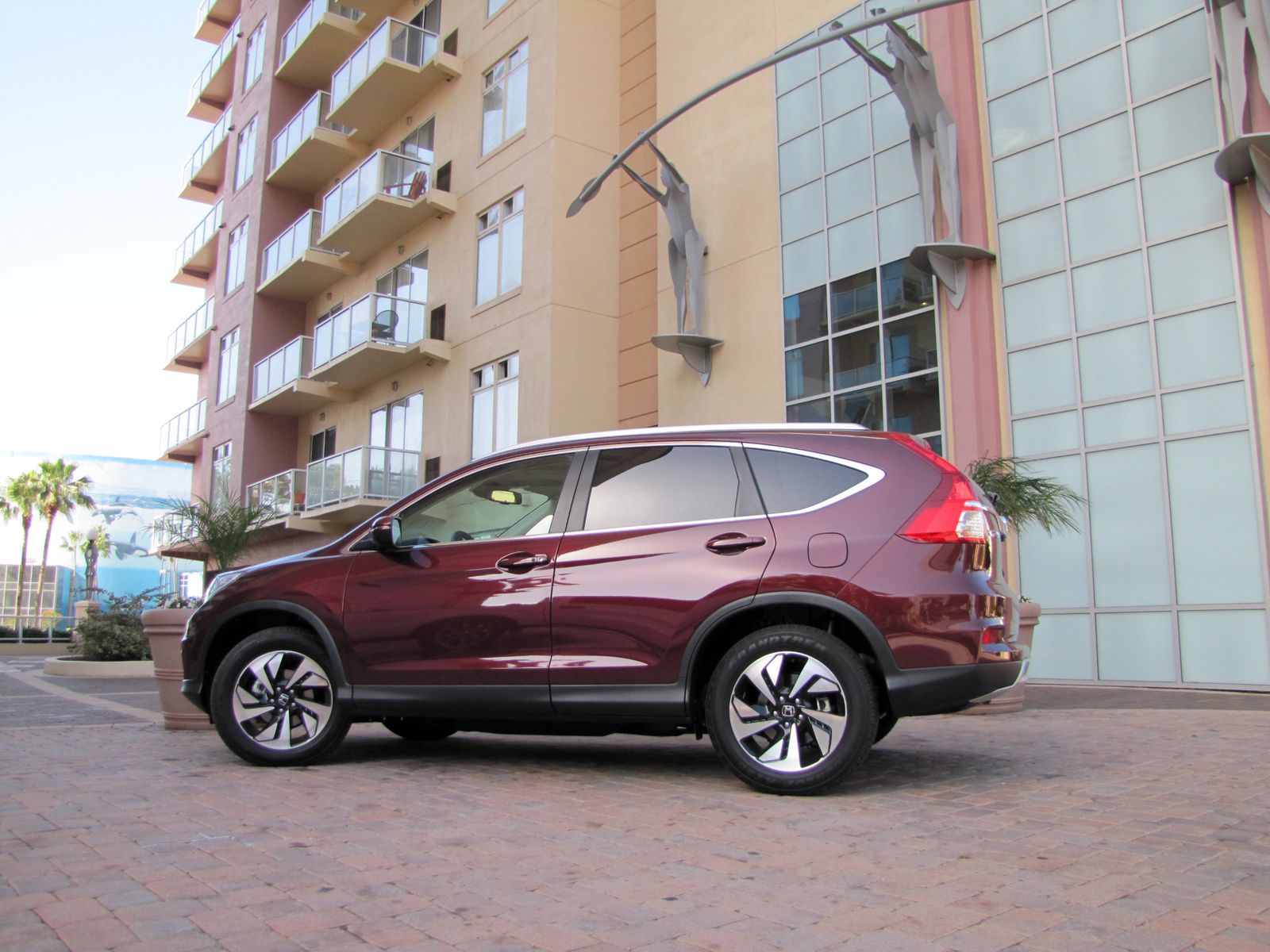
Photo by Ryan ZumMallen